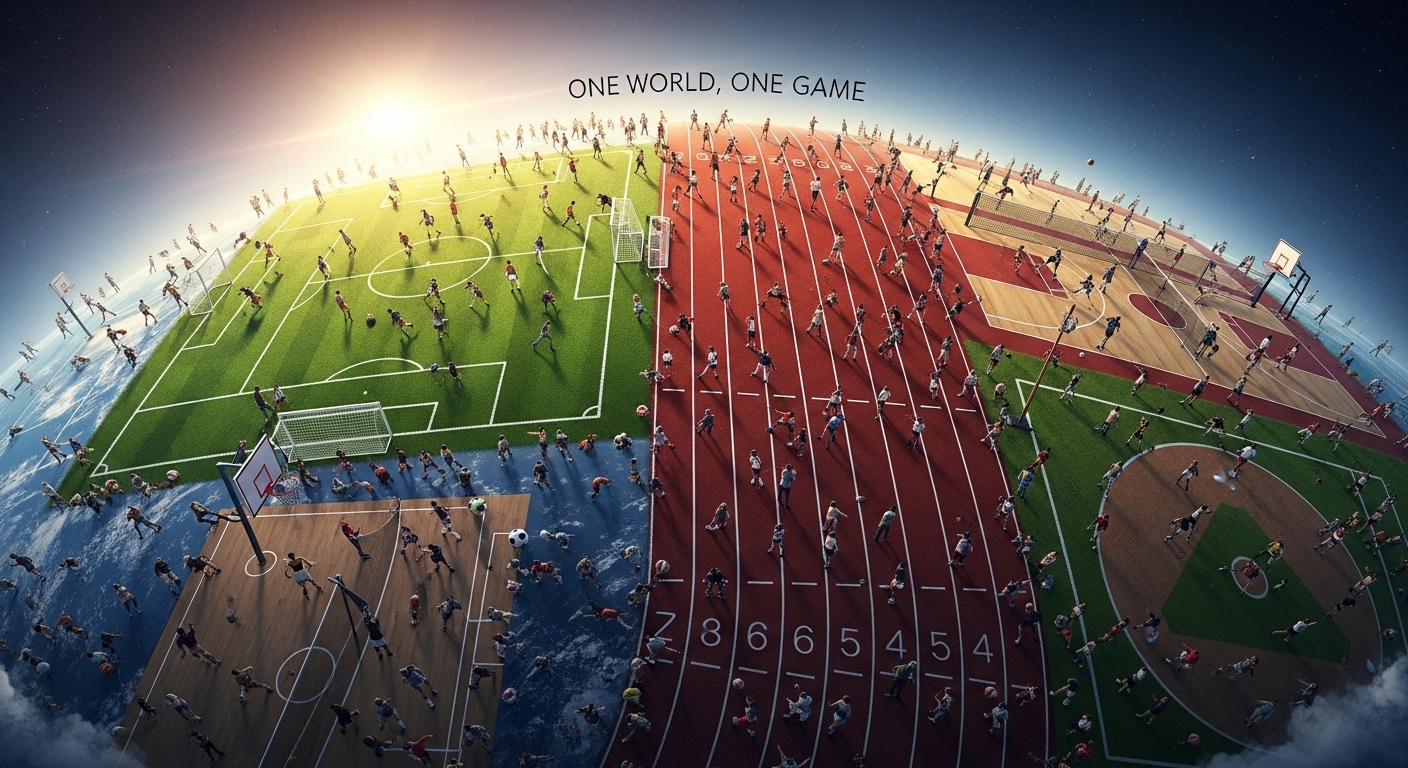Cricket, a sport with centuries of history, has always been a game of skill, strategy, and passion. Traditionally played on grassy fields with bat and ball, the sport has seen incremental changes over time, but the last two decades have brought a technological revolution. From improving player performance to enhancing fan engagement, technology is reshaping every aspect of cricket.
This blog explores how technology is revolutionizing cricket, examining innovations in umpiring, training, analytics, broadcasting, and fan experiences. The impact is not only on the field but also off it, transforming cricket into a smarter, faster, and more immersive sport.
Technology in Umpiring and Decision Making
One of the most visible ways technology has changed cricket is through umpiring and match officiating. The introduction of digital tools has reduced human error and increased the fairness of the game.
1. Decision Review System (DRS)
The Decision Review System allows players to challenge umpire decisions using technology. Ball tracking, Hawk-Eye, and UltraEdge technologies provide accurate insights on LBWs (leg before wicket) and close catches, giving teams a fair chance to contest calls.
2. Hawk-Eye
Hawk-Eye tracks the trajectory of the ball, predicting its path and helping determine LBW decisions. Its accuracy has transformed critical moments in matches, making games more transparent and just.
3. UltraEdge and Snickometer
These tools detect faint edges and subtle contact between the bat and ball. UltraEdge uses sound detection to confirm whether the ball has touched the bat, while Snickometer provides visual and audio confirmation, assisting umpires in making precise judgments.
4. Real-Time Analytics
High-speed cameras and advanced software allow instant replays, slow-motion analysis, and detailed insights during matches. Umpires can make more confident decisions, reducing controversies and enhancing credibility.
Player Performance and Fitness
Technology has also revolutionized the way players train, monitor their performance, and maintain fitness.
1. Wearable Devices
Cricketers now use wearable devices to track heart rate, stamina, workload, and motion patterns. GPS trackers, smart watches, and fitness sensors provide real-time data to coaches, helping prevent injuries and optimize training.
2. Biomechanics Analysis
High-speed cameras and motion sensors analyze batting and bowling techniques. Biomechanical feedback allows players to correct flaws, improve accuracy, and enhance power, reducing the risk of injury.
3. Virtual Training Tools
Virtual and augmented reality platforms allow players to simulate match scenarios. Batsmen can face virtual bowlers, while bowlers can practice against simulated batsmen, improving reaction times and decision-making without physical wear and tear.
4. Nutrition and Recovery Technology
Advanced technologies monitor players’ diets, hydration levels, and recovery cycles. Smart recovery equipment like cryotherapy chambers and muscle stimulation devices accelerates healing and maintains peak performance throughout tournaments.
Tactical and Strategic Advantages
Beyond physical performance, technology has transformed strategy and tactics in cricket.
1. Data Analytics
Teams now rely heavily on data to plan strategies. Analytics provide insights on opposition players, pitch conditions, and historical match data, helping captains make informed decisions.
2. Predictive Analysis
Using historical trends and real-time data, predictive analysis can suggest bowling changes, field placements, and batting strategies. This allows teams to anticipate opponent moves and respond proactively.
3. Video Analysis
Teams use video footage to study opponents’ techniques, strengths, and weaknesses. Coaches can develop tailored strategies, identify patterns, and exploit vulnerabilities effectively.
4. Fielding Analytics
Sensors and tracking systems provide data on fielding performance, positioning, and reaction times. Teams can optimize field placement to improve run-saving potential and wicket-taking opportunities.
Broadcasting and Fan Engagement
Technology has also transformed how fans experience cricket, making it more immersive and interactive.
1. High-Definition Broadcasting
Ultra-high-definition cameras, slow-motion replays, and multiple angles offer fans a cinematic experience. Viewers can follow every nuance of the game, from the swing of the ball to the fielder’s reaction.
2. Augmented Reality Graphics
Augmented reality displays, such as pitch maps, speedometers, and wagon wheels, enhance the understanding of match statistics. Fans can visualize complex metrics in real-time, making viewing more engaging.
3. Virtual Reality Experiences
Some broadcasters offer VR experiences, allowing fans to feel as if they are inside the stadium. Fans can choose their perspective, from behind the stumps to the bowler’s view, creating immersive engagement.
4. Social Media and Live Interaction
Social media platforms enable real-time discussions, polls, and fan interactions during matches. Fans now have a voice in the game’s digital ecosystem, contributing opinions, memes, and support that enrich the cricketing community.
Technology in Stadiums
Cricket stadiums themselves have embraced technology to enhance both player and fan experiences.
1. Smart Stadiums
Modern stadiums feature integrated Wi-Fi, smart screens, and LED displays to provide real-time stats, player insights, and fan interaction platforms. Smart ticketing systems and digital entry have streamlined access and security.
2. Advanced Pitch Technology
Sensors and soil monitoring equipment assess pitch conditions before and during matches. Groundsmen can optimize pitch behavior for fairness, safety, and entertainment value.
3. Crowd Management
AI-powered surveillance and analytics improve crowd safety, detect unusual behavior, and manage seating efficiently, enhancing the overall stadium experience.
Cricket Training Apps and Platforms
The rise of mobile apps and digital platforms has made cricket training accessible globally.
1. Skill Development Apps
Apps provide video tutorials, practice drills, and interactive coaching tips for players at all levels. Beginners can learn batting, bowling, and fielding techniques without formal coaching.
2. Match Simulation Platforms
Players can simulate matches and analyze performance digitally. These platforms offer feedback on decision-making, shot selection, and tactical awareness.
3. Online Coaching Communities
Digital platforms connect players, coaches, and mentors worldwide. Knowledge-sharing and virtual mentoring improve learning and development opportunities, democratizing cricket education.
Impact on Cricket Careers
Technology has also influenced cricketing careers by opening opportunities and transforming pathways.
1. Talent Scouting
AI and analytics platforms help identify young talent. Video analysis, performance metrics, and scouting databases enable teams to recruit promising players efficiently.
2. Global Opportunities
Digital exposure through live streams, social media, and online tournaments allows cricketers from smaller regions to gain recognition, leading to domestic and international opportunities.
3. Performance Tracking
Career-long performance tracking provides objective data for selections, contract negotiations, and endorsements. Players can showcase their consistency and growth quantitatively.
Challenges of Technological Integration
While technology offers numerous benefits, its integration in cricket comes with challenges.
1. Cost and Accessibility
Advanced technologies can be expensive, limiting access for smaller clubs and developing regions. Ensuring equitable adoption remains a challenge.
2. Overreliance on Technology
Excessive dependence on analytics and digital tools may reduce intuitive decision-making. Balancing technology with human judgment is critical.
3. Data Privacy and Security
Collecting player and fan data raises privacy concerns. Secure systems are necessary to prevent misuse and maintain trust.
4. Resistance to Change
Traditionalists sometimes resist technological changes, arguing that the sport’s essence lies in human skill and intuition. Bridging this gap requires careful implementation and education.
The Future of Technology in Cricket
The evolution of cricket technology is ongoing, and the future promises even more innovations.
1. Artificial Intelligence
AI could enhance predictive analysis, provide personalized coaching, and simulate realistic training scenarios.
2. Wearable Smart Equipment
Smart bats, gloves, and balls equipped with sensors may track impact, spin, and shot mechanics in real-time, providing deeper insights into performance.
3. Augmented Reality Training
AR training environments may simulate real-match conditions, allowing players to practice against virtual bowlers in highly realistic settings.
4. Enhanced Fan Interaction
Future stadiums and broadcasts may integrate holograms, interactive dashboards, and AI-driven commentary, creating immersive, personalized experiences for every fan.
Conclusion
Technology has fundamentally transformed cricket, touching every aspect of the game—from umpiring and player performance to broadcasting and fan engagement. The integration of analytics, AI, wearable devices, and digital platforms has made cricket smarter, faster, and more immersive.
While challenges remain, the benefits of technology are undeniable. Players can perform at higher levels, coaches can make informed decisions, and fans can engage more deeply than ever before. As technology continues to evolve, cricket will remain a sport that balances tradition with innovation, combining the timeless thrill of bat and ball with the limitless possibilities of modern technology.
The future of cricket is not just about the players on the field—it is also about the technology that empowers them, the fans that energize them, and the innovations that will define the next era of the game.



